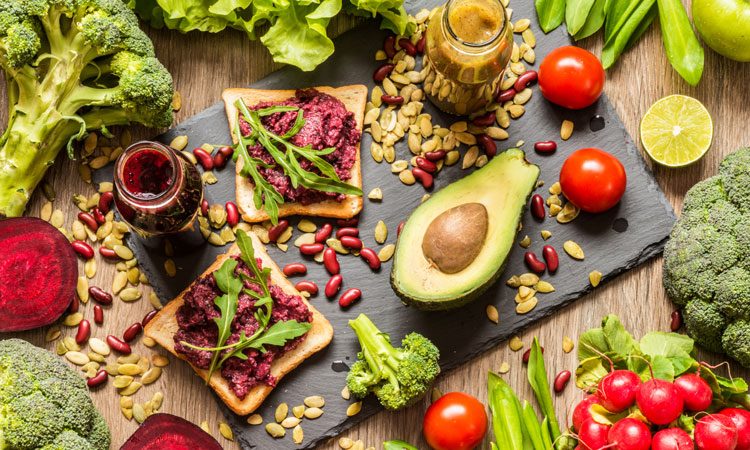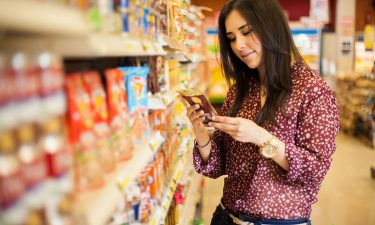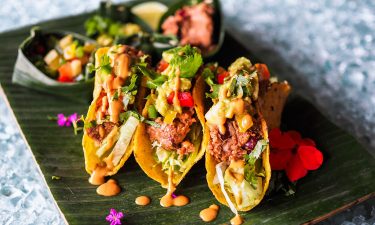How clean label could bolster the vegan market
- Like
- Digg
- Del
- Tumblr
- VKontakte
- Buffer
- Love This
- Odnoklassniki
- Meneame
- Blogger
- Amazon
- Yahoo Mail
- Gmail
- AOL
- Newsvine
- HackerNews
- Evernote
- MySpace
- Mail.ru
- Viadeo
- Line
- Comments
- Yummly
- SMS
- Viber
- Telegram
- Subscribe
- Skype
- Facebook Messenger
- Kakao
- LiveJournal
- Yammer
- Edgar
- Fintel
- Mix
- Instapaper
- Copy Link
Posted: 16 September 2019 | Kate Harveston - online journalist and blogger | No comments yet
With the increasing popularity of both the clean label and vegan movement, can the two trends align to satisfy the modern consumer?


The demand for vegan foods continues to rise at unprecedented rates along with another trend: clean eating. Many consumers are not only concerned with eating plant-based foods, but they also want simple, whole foods that are free from artificial ingredients and additives.
Most natural vegan foods, like fresh fruits and vegetables, beans, nuts and grains, fall into this clean-eating category, but some processed vegan foods still contain additives and ingredients that many consumers would like to avoid.
Consumers are also shifting their preferences towards food products and companies that are socially and environmentally responsible, tying into the clean eating trend. And while vegan food is naturally better for the environment than red meat and other animal products, highly processed vegan foods do use up more resources than fresh, whole foods.
The current demand for more clean eating has driven food companies to reformulate processed foods, reducing their ingredients lists by sometimes as much as half, finding more environmentally-friendly packaging and other measures that make products more appealing to informed and concerned consumers.
The push for clean labels
Due to consumers having a greater focus on ingredients and reading labels, there is a push for easy-to-read labels that can show how healthy a product is, at a glance. In Europe, several groups are pushing for mandatory, easy-to-read, universal labels on all food products, making it even easier for consumers to make informed, healthier decisions. The proposed labels would show a simple and colourful scale from A to E, with A signifying a healthier food choice, and E a less-healthy option.


Consumers are becoming more concerned with the ingredients in their food.
The proposed European label does have some drawbacks though. Because the health factor of each food is reduced to simple metrics, some foods containing healthy fats like olive oil, for example, receive a lower ranking than they should, while highly processed foods can tweak ingredients to get a higher score through various additives.
But consumers are not only concerned with nutrition metrics today. A label is needed that would highlight foods that are simple and wholesome, free from certain additives and artificial ingredients. Sometimes listing what is not in a food product is just as important as listing what is in it. Depending on the individual diet and preferences of the consumer, they may be looking to avoid sugar, salt, corn, GMOs, artificial flavours and colours, preservatives, gluten, or common allergens like soy, dairy and nuts.
While it would be almost impossible for one label to please every dietary preference, a universal labelling system would enable consumers to make quicker decisions and highlight certain health factors in foods.
For example, similar to the way that many whole vegan foods are considered ‘clean’, a Kosher diet generally aligns with clean eating. The word Kosher itself means ‘pure’ or ‘proper’ and signifies a diet free from many ingredients that are considered unclean.
Currently, many foods are already clearly labelled as certified Kosher, making it easier to follow this diet. The clean eating movement could use a tried-and-true labelling system like this as a successful example of food labelling and consumer preferences.
Clean labels as a growth opportunity
For food companies, the movement toward clean labels can be seen as a marketing opportunity. Consumers will be seeking out foods that fit in with a healthy, whole-foods diet with fewer ingredients. Clean labels will clearly advertise the healthiest foods, making them more visible to consumers. Foods that are already on the healthy, clean-eating side will clearly benefit from the labelling.
Highly processed foods could be challenged by the new labelling system, but this could be the push those manufacturers need to respond to consumer demand and adjust ingredients in their products. Finding better ingredients without compromising taste and quality will give a better clean label score and keep consumers happy.


Could the clean label movement have a positive impact on the vegan market?
One area that could really see success with this is the vegan foods industry. Vegan foods are generally healthier than meats and other animal products, and a labelling system will make this even more apparent. However, many vegan products like meat alternatives and cheese alternatives are highly processed and contain too many ingredients for the clean-eating crowd.
Therefore, with the current consumer demand and universal clean labels, processed vegan foods could be challenged to be better than ever. There is already a strong movement in this direction, and clean labels could push it even further.
As food companies respond to the clean label trend, it will be easier than ever for consumers to see that many vegan foods are naturally much healthier than their animal-product counterparts. Additionally, this trend should push other processed vegan food products to improve their formulas to find ingredients that are even healthier, aligning more with a clean-eating lifestyle.
Biography
Kate Harveston is an online journalist and blogger who writes about sustainability, nutrition, and healthcare.
Related topics
Clean Label, Health & Nutrition, Ingredients, Natural, Packaging & Labelling, Regulation & Legislation, The consumer, World Food







